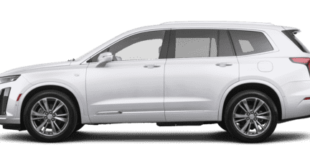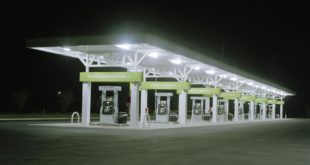
Marc UrbanoCar and Driver
Winner: Porsche 911 Turbo S
Just when we thought production cars had reached a plateau in straight-line performance, we tested a car that nearly nipped the 2015 Porsche 918 Spyder for the quickest 60-mph time we’ve ever measured. We guess we shouldn’t be surprised that the 640-hp missile that (almost) did it was also from Porsche. The 992-generation 911 Turbo S missed tying the 918’s 2.1-second sprint to 60 mph by just a tenth of a second. We’re guessing that record will fall soon, though automakers will have to work on more than just increasing launch traction if they plan to supplant the 918’s quarter-mile record of 9.7 seconds. The Turbo S is 0.4 second behind in that metric.
Losers: GM Full-Size SUVs
No one would ever call the Yukon, Tahoe, Suburban, or Escalade a handling icon, but we had some hope that body-on-frame dynamics would reach new heights this year with GM’s adoption of an independent rear suspension for its full-size SUVs. But that optimism quickly turned to confusion when we initially couldn’t surpass 0.40 g on the skidpad in any of them. To beat that poor showing, we engaged low range, a mode where most 4x4s completely disable stability control. While that worked to get us into the 0.70s on the skidpad, engaging the short gears in the transfer case on paved roads won’t do the half-shafts any favors. When we asked GM why the stability control is so intrusive, we got a very diplomatic response: “The stability controls on GM’s full-size SUVs are developed to ensure safe vehicle operation for a wide range of driving conditions and driver inputs. The dynamic performance of these SUVs meets or exceeds requirements associated with applicable government regulations.” We suspect it’s to protect an engine-oiling weakness, as a massive cloud of smoke trailed every one of these brutes after each lap of the skidpad.
Winner: Porsche Taycan Turbo S
The Teslarati were faced with indisputable evidence that an electric car exists that does something better than the X, 3, Y, and S models from their beloved Silicon Valley automaker. You see, as an EV’s battery depletes, the car’s performance inevitably suffers. But Porsche’s Taycan Turbo S minimizes that performance degradation better than any Tesla we’ve tested. After 15 consecutive acceleration runs, the Taycan Turbo S’s 10.5-second quarter-mile time slipped just 0.9 second whereas the Model S Performance tacked 4.5 seconds onto its time. Did Porsche figure out how to make negatively charged ions lighter, like gas burning off in a fuel tank?
Loser: Tesla Model S Performance
Not to pile on, but during those acceleration runs we just mentioned, the Model S Performance’s 60-mph time more than doubled, reaching 7.0 seconds on the sixth run. A few months later, Tesla addressed this issue with the Cheetah software update, which not only shaved a tenth off the Model S’s 60-mph time, to a Taycan Turbo S–matching 2.4 seconds, but also made it so the Tesla could run 15 back-to-back runs with every pass under 4.0 seconds.
Winners: Hyundai Sonata Hybrid and Ioniq Electric
Of the 83 hydrocarbon-burning cars we subjected to our 75-mph highway fuel-economy test this year, the Hyundai Sonata Hybrid traveled farthest on one gallon of fuel. Its 51-mpg score is impressive, but almost nearly as impressive is the sporty Honda Civic Si sedan’s 41-mpg result in the same test. Hyundai also took top honors in the gallon-of-gas-equivalent category, with the Ioniq Electric netting 127 MPGe during its run.
Winner: Nissan Frontier
In the most unlikely of upsets, the 120-mph Nissan Frontier will outrun a Ram 1500 TRX, given the road is flat and the race is long enough that the Nissan can exploit the Ram’s 2-mph top-speed deficit. It’s an SAT question in the making, but by our calculation, the 310-hp Frontier needs six minutes, 28 seconds to make up the 1000-foot lead the 702-hp Ram gains during acceleration. That’s about a 12.5-mile drag race. It could happen, although Nissan says it won’t, as the Frontier we tested was a preproduction model, and the automaker tells us customer Frontiers will be limited to 112 mph. Bummer. There goes Nissan’s bid at the 2021 Dakar Rally.
Loser: BMW M440i xDrive
BMW continues to amaze in ways we wish it didn’t. The company used to make some of the world’s best sports sedans and coupes. Used to. But when we rolled the newest, nostriliest M440i xDrive onto the scales, we did a double take: The readout showed 53.8 percent of this car’s nearly two-ton mass was positioned over the front axle. This certainly contributed to the M440i’s poor 0.91-g skidpad result, the worst we’ve ever achieved in a Michelin Pilot Sport 4S–shod car. What happened to all that 50/50-weight- distribution talk, BMW?
Biggest Loser: SSC
In October, American supercar maker SSC claimed a new production-car top-speed record of 316 mph with its 1750-hp Tuatara. The video documenting this feat quickly drew internet fire because the elapsed time between known points on the chosen road didn’t align with the claimed speeds. We asked SSC why it didn’t use an established player in GPS data logging, such as Racelogic, to verify the results, and it told us, “We were going at speeds that aren’t standard automobile speeds, and [we] had wanted more of an aerospace-level validation system.” That’s weird, because our VBox 3i data loggers are certified to 1000 mph, and we peddle an $ 8 magazine, not seven-figure cars. Julian Thomas, Racelogic’s founder, scraped SSC’s video frame by frame and, comparing the elapsed time with visual landmarks, computed a peak of 224 mph. That’s almost a Ram TRX’s top speed away from the 331-mph max shown on screen. SSC vows to make another attempt with third-party witnesses. If the record stands, we can move on to debating whether SSC is a production-car manufacturer. (It isn’t.)
This content is created and maintained by a third party, and imported onto this page to help users provide their email addresses. You may be able to find more information about this and similar content at piano.io











